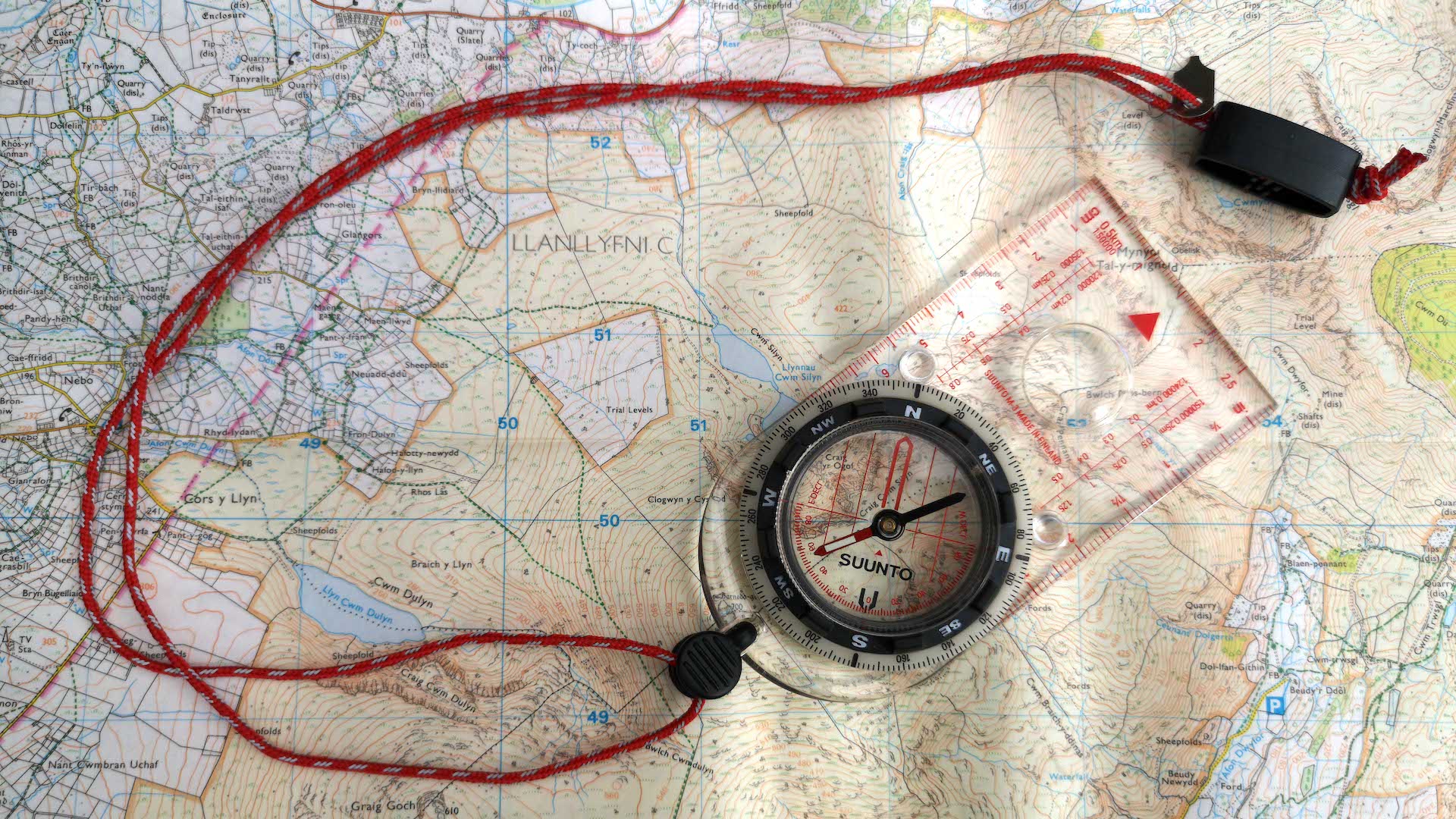Advnture Verdict
This high-quality base plate compass from Suunto is a great navigational tool, with a better bezel than the Silva Type 4 and a more robust all-round build. For those reasons, unless you tend to navigate with 1:40k Harvey or BMC mapping, it would be our top overall compass pick.
Pros
- +
Clear, crisp dial
- +
Excellent lume for low-light use
- +
Needle settles quickly
- +
Easy-grip bezel with cardinal and inter-cardinal points
- +
Friction feet for use with a map
- +
Includes 1:20k and 1:24k scale distance markings as well as 1:25k and 1:50k
Cons
- -
Lacks 1:40k scale distance markings
- -
No Romers for easy grid ref finding
You can trust Advnture
Suunto M-3: first impressions
The Suunto M-3 has Nordic cool on its side. When it comes to the best compasses on the market, there are two big brands duking it out at the top, and both hail from Scandinavia. The first – and the market leader – is Silva, a Swedish brand (though their compasses are now made in China). The second is the Finnish brand Suunto, whose compasses are still made in Finland.
The M-3 is Suunto’s answer to Silva’s Type 4. It’s a sturdy and practical base plate compass (see types of compass if you’re unclear what that means) that, if we’re honest, feels better-built than the Type 4, with chunkier plastics, clearer markings and generally a slightly more premium feel. It certainly has a superior bezel, with easy-grip knurling, 360-degree luminescence and numerical degree markings every 20 degrees, plus 2-degree hashing. It’s also marked with both cardinal and inter-cardinal points.
The M-3 has the edge over most rivals when it comes to base plate markings too. Admittedly, it lacks the user-friendly, two-way ‘eastings and northings’ Romer scales of the Type 4 and the Alpkit Williams compasses, and also lacks a 1:40k scale. For that reason, it wouldn’t be our recommended compass for use with 1:40,000 Harvey maps or similar (see how to read a map and how to use a compass).
On the other hand, the M-3 does have both 1:20k and 1:24k scales, which while being of limited use in the UK, are extremely useful in other countries, where these scales are commonly used for national mapping.
• RRP: $49 (US) / £35 (UK)
• Weight: 50g/1.76oz
• Dimensions: 61 x 120 x 14mm / 2.4 x 4.72 x 0.55in
• Scales: 1:20k, 1:24k, 1:25k & 1:50k
In the field
The Suunto M-3 is slightly shorter and squatter than most full-size base plate compasses, with a rounded and slightly raised ‘butt end’ that sits snugly in the palm. It’s a very practical design that employs chunky, robust plastics.
The oil-damped needle spins freely but settles quickly, with a red-painted and lumed north indicator. It is weighted for the northern hemisphere. The capsule can also be adjusted for declination where this applies, meaning that once set you can forget about it for the duration of your trip (unless you move to a new location with a different declination, of course).
It has clear red orienting lines too. In low-light conditions, the M-3 is definitely the best compass of all those tested here. It has a luminescent bezel that is very easy to read, plus a lumed needle, bearing indicator and direction of travel indicator.
All the latest inspiration, tips and guides to help you plan your next Advnture!
Friction feet on the underside of the base plate means it stays firmly planted on your map, without sliding around. And the supplied lanyard is a good-quality cord with a plastic clip, an adjustable neck slider and a metal key that is used to adjust the declination (so keep it safe).
An outdoors writer and editor, Matt Jones has been testing kit in the field for nearly a decade. Having worked for both the Ramblers and the Scouts, he knows one or two things about walking and camping, and loves all things adventure, particularly long-distance backpacking, wild camping and climbing mountains – especially in Wales. He’s based in Snowdonia and last year thru-hiked the Cambrian Way, which runs for 298 miles from Cardiff to Conwy, with a total ascent of 73,700 feet – that’s nearly 2½ times the height of Everest. Follow Matt on Instagram and Twitter.


